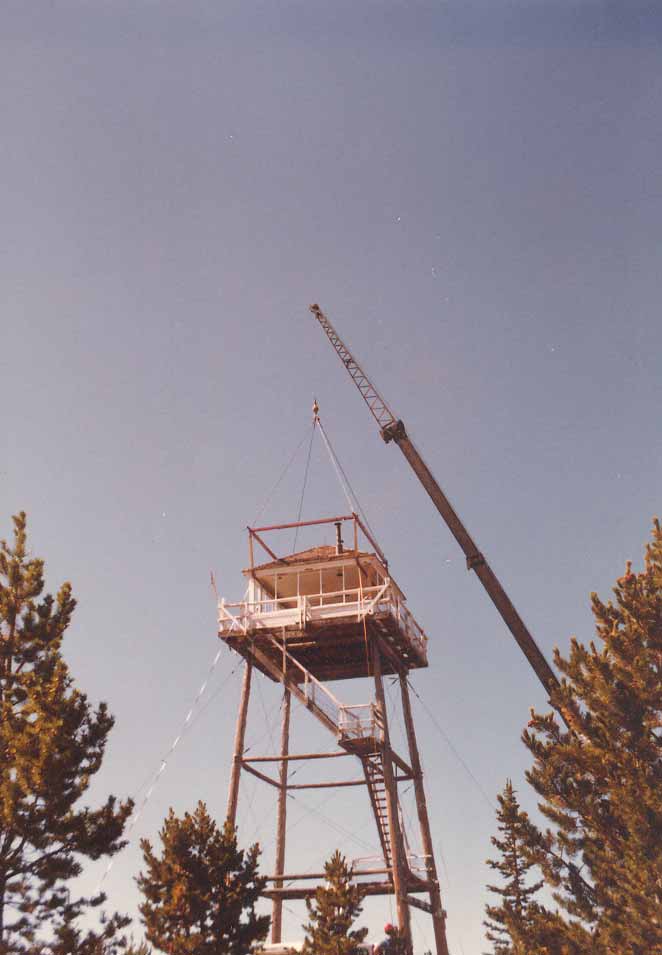









Manufactured in Columbia Falls in 1930, pre-packaged lookouts, similar to this lookout, were shipped throughout a four-state region for assembly on a tower or bare ground. This lookout was dismantled at its site 40 miles southeast of Missoula, atop Sliderock Mountain, and moved to the Museum in 1983 with the assistance from the Friends of the Historical Museum and the Missoula Chapter of the Society of American Foresters.
Can you spot... the refrigerator?
Although the fire lookouts didn’t actually have a refrigerator, they did have way of storing perishable foods for a short time. When you stand on the landing between the two flights of stairs you’ll see a wooden box suspended below the lookout. By adding a wet piece of canvas to that screened side the lookout would create a cooler to keep eggs and cheese fresh for a short period of time – made a nice break from those cans of spam!
The United States’ Forest Service’s fire lookout system began prior to 1910 with a crude system of tents and crow’ nest lookouts. Watching for wild fires in unpopulated areas was a relatively new idea and was regarded with little importance until the devastating destruction of the Great Fire of 1910. 1910 was a year of tragic snow slides, avalanches and records snowfalls, but by summer the forests were tinder-dry and fires burned throughout the Northwest. Firefighting crews did their best to fight the over 1,700 different blazes that eventually burned three million acres between Spokane, Washington and Glacier National Park. The fires of 1910 took lives, and caused major losses of property and forestland. These damages forced the Forest Service to re-examine their practices, and they began building lookouts.
This lookout tower was stationed at Sliderock Mountain, located just off Rock Creek road, southeast of Missoula. When the lookout was brought to the Museum in 1983, it was placed on its own “mini-Sliderock” mountain. The first section of stairs was removed, so Sliderock Lookout sits lower than it would have in its original location.
The lookout was built in the 1930s with an “L-4” support structure. These lookouts were manufactured in Columbia Falls, Montana and shipped to a four-state region. L-4 lookouts were designed so they could be easily carried to a site by pack animals and then set up on timbers that were cut on-site. L-4’s varied in height, and some had no in-closed tower. This style of lookout was used from the 1930s through the 1970s when many of the 800 manned lookouts in the Region 1 Fire District were replaced by aerial observation. By the 1980s, fewer than 100 lookout towers were in use.
Today the lookout is used to tell the story of the 1910 fires, and represent the lives of Forest Service lookouts throughout the Northwest. The 14’ x 14’ cabin is set up as if it were a working lookout, complete with bed, cook stove and an aladaide, also known as the Osborne fire-finder, set up in the center of the room. A lookout was required to use and understand equipment such as the fire-finder, as well as learn the terrain around their tower so they could be as accurate as possible when reporting a fire. Lookouts were required to keep daily notes on their designated area that included weather, wind speed and directions.

